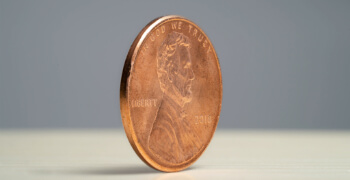Your Sneaker Is a Slipper – Wacky Tax Wednesday
The shoe tax
America has a shoe tax—actually, a tariff imposed on foreign-made shoes. Created in the 1930s, back when American shoes were manufactured in America, the steep tariffs helped protect the interests of American shoemakers by raising the price of imported shoes. Yet nowadays, 99% of American shoes are Not-Made-in-America.
The shoe tax increases the cost of most imported shoes. Tariff rates differ by shoe type: open-toed and high-end leather shoes are either entirely or mostly exempt, while the duty on canvas shoes can be as high as 67% (Tax Foundation). That seems arbitrary and even strange unless you consider the type of shoe most commonly worn by the people who created the law. Hmmm.
In any event, the stiff shoe tax had a curious side effect. It turned some shoes into slippers.
The sneaker becomes a slipper
The next time you’re shopping for shoes, pick up a pair of Converse All Star Chuck Taylors. You’ll recognize them by their look—it’s the same one Chucks had when you were a kid and when your parents were kids. Now turn them over. What do you see?
Fuzz. A portion of the sole is fuzzy.
The fabric embedded in the soles of Converse is there by design, but it’s not there to make the shoe quieter or more comfortable or ideal for dancing. It was added around 2003 (see photos) to turn the sneaker into a slipper. Covering at least 50% of the bottom surface of the shoe with fabric changes the tariff classification of the footwear. According to a 2002 U.S. Customs bulletin, “Classification of footwear is essentially based upon the composition of the outer soles and uppers.”
Classification matters. Footwear classified as slippers (subheading 6405 HTSUS) has duty rates between 7.5% and 12.5%. Footwear classified as having rubber or plastic outer soles (subheadings 6401, 6402 and 6404 HTSUS) has duty rates from 37.5% to 90 cents/pair + 37.5%.
You can see why a shoe manufacturer might add some fabric to the bottom of shoe, and Converse (now owned by Nike) is not the only shoe manufacturer to do so. Yet it could be considered “impermissible tariff engineering” to apply textile material to the sole of footwear for no other reason than to reduce the tariff. And in fact, shoe manufacturers have been accused of just that (usually by shoe manufacturers still on American soil), sparking numerous customs rulings. Eventually, President Obama even got involved.
In November 2011, President Obama approved recommendations made by the U.S. International Trade Commission, thereby legitimizing “the use of textile outsoles to lower duty-rates for certain footwear, including most of the footwear currently utilizing textile outsoles today.” In addition, “14 new tariff breakouts legitimize the use of all types of textile outsoles for the affected footwear, no matter how they are adhered to the outer sole of the shoe—from embedded to slapped on and glued on—in order to achieve the lower duty rates.” This makes the American Apparel & Footwear Association (AAFA) happy (remember, 99% of American shoes are not manufactured in America).
The Affordable Footwear Act of 2013
Given that the shoe tax is controversial enough to merit presidential intervention, it should come as no surprise that lawmakers have attempted to abolish it. The Affordable Footwear Act of 2013 sought to “suspend temporarily the duty on certain footwear, and for other purposes.” Among other interesting statistics, it highlights the following Congressional findings:
- “Average collected duties on imported footwear are among the highest of any product sector, totalling approximately $2,300,000,000 in 2011 and approximately $2,500,000,000 in 2012.”
- “Duty rates on imported footwear are among the highest imposed by the United States Government, with some as high as the equivalent of 67.5% ad valorem.”
- “Footwear produced in the United States supplies only about 1 percent of the total United States market for footwear. This production is concentrated in distinct product groupings, which are not affected by the provisions of this Act.”
The bill suggests that footwear prices would be significantly reduced should the tariffs be reduced or eliminated. Another possibility is that shoe manufacturers would earn greater profits, but that’s a moot point because the bill never made it to vote.
Recap
In the 1930s, American lawmakers created a shoe tax to inflate the price of imported shoes, thereby giving a boost to American shoe manufacturers. By the time I was old enough to tie my own Converse, American manufacturers were discovering that it was cost effective to shift shoe production to foreign shores. Flash forward to today, when only 1% of the shoes on American feet are actually manufactured in America. The other 99% are subject to the shoe tax.
Some shoe manufacturers figured out that adding a thin layer of fabric to at least 50% of the sole of a shoe changes the classification of a shoe to a slipper and allows the footwear to be taxed at significantly lower rate.
Voilà! Your sneaker is a slipper.
Now that’s wacky.
Thanks to SJ, PN, DB, and GazEtc for bringing this topic to my attention.

The Avalara Tax Changes midyear update is here
Trusted by professionals, this valuable resource simplifies complex topics with clarity and insight.
Stay up to date
Sign up for our free newsletter and stay up to date with the latest tax news.














